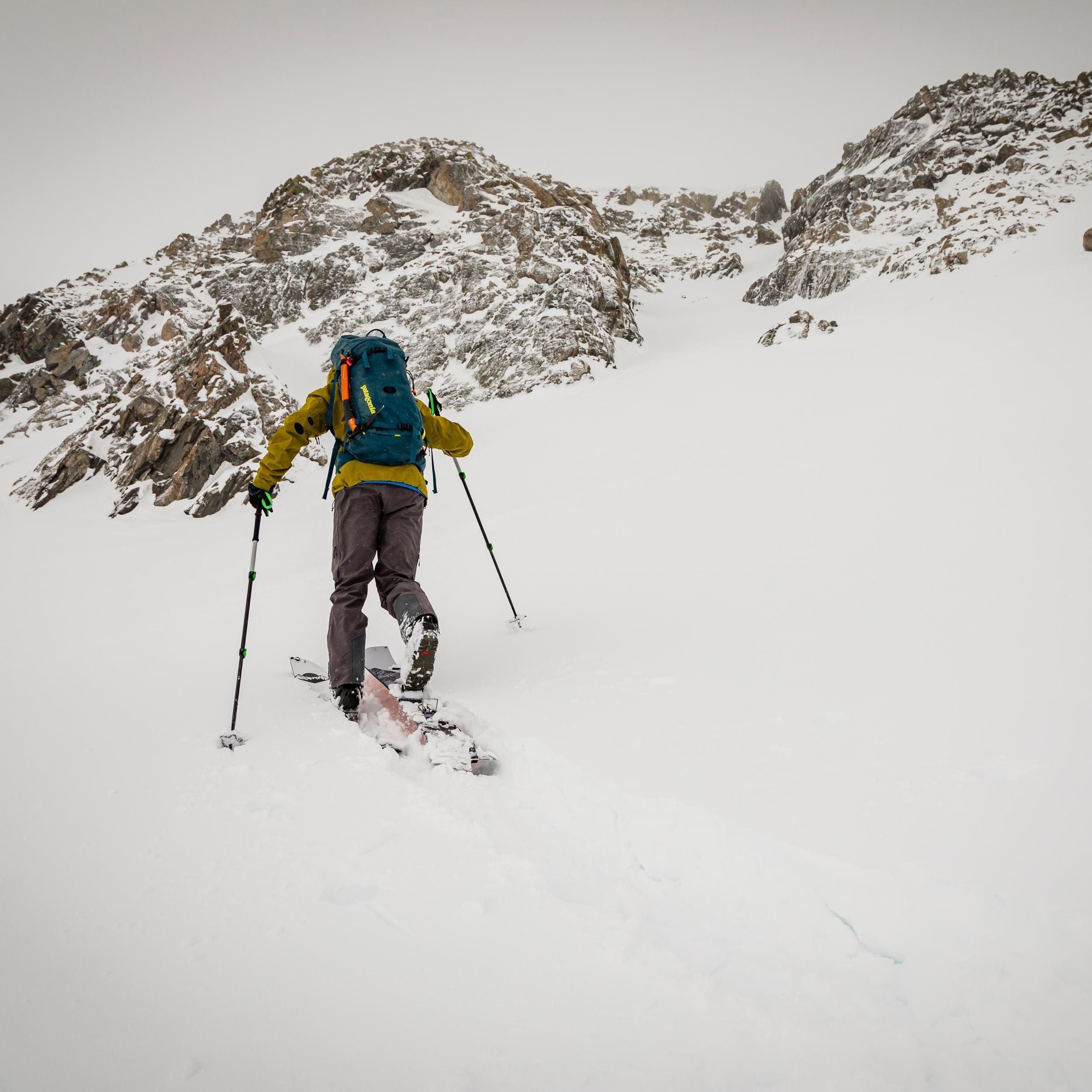Recommendations

When starting splitboarding, the most natural progression (and most cost-effective) is to use your current resort boots on a soft boot splitboard setup. However, as you begin to set your sights on bigger, longer, and more technical tours, you will notice major disadvantages in your resort boots. These disadvantages include a limited range of motion in the cuff while touring, poor side-hilling performance, and a lack of durability. So, what is the answer to these limitations? Hardbooting!

We chatted with Jack Klim, Director of Operations and Guide for San Juan Expeditions, to learn why he is a die-hard hardbooter. While hardbooting typically has a reputation for sacrificing riding feel and performance for touring efficiency, Jack has found that his hardboot setup provides great advantages on the up and down. Jack said, "Hard boots these days have advanced to feel like slippers, walk like a running shoe, and ride like a soft boot."

When heading uphill, the benefits of a hardboot are night and day. The range of motion is 70% better than any soft boot, allowing you to take longer, more efficient, and comfortable strides. Additionally, you will save more than a pound of weight going to a hardboot setup over a traditional soft boot. This increased range of motion and decreased weight makes big days in the mountains easier and more fun. You will feel like you have nothing on your feet! Once you start bootpacking steep lines, a hardboot's advantage becomes even clearer. Jack said, "Let's be honest: rubber toe and heel piece crampons on snowboard boots have a ton of movement and lack rigidity. I have had crampons fall of snowboard-boots and the lack of rigidity in a snowboard-board boot when climbing WI4 is down right terrifying." With a hardboot, the plastic shell of the boot and the automatic crampon compatibility offers way more confidence and security when kicking in steps on a steep pitch.

While some will claim hardboots do not have a great feel when riding downhill, Jack begs to differ, stating, "I am riding free-riding terrain more in my career now than I have ever before, and it has all been on a hardboot setup. The fact of the matter is, there is less play and sloppiness in a hardboot system, and it is amazing how the boots flex torsionally and longitudinally." With a more secure connection with your board, hardboots offer a precise and reactive ride feel. A harboot setup may never feel like a super soft park setup and it may take a few laps to get used to the increased responsiveness, but the added control and feel is spot on.
Your local bike and backcountry experts. Ski touring, splitboarding, telemark skiing, and everything from road to mountain bikes; we have the gear for all your backcountry adventures!
Sign up for exclusive offers, original stories, events and more.
